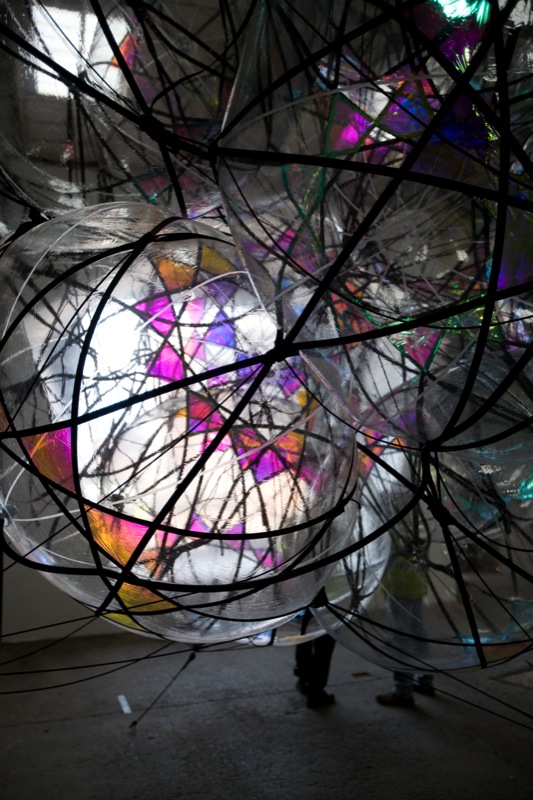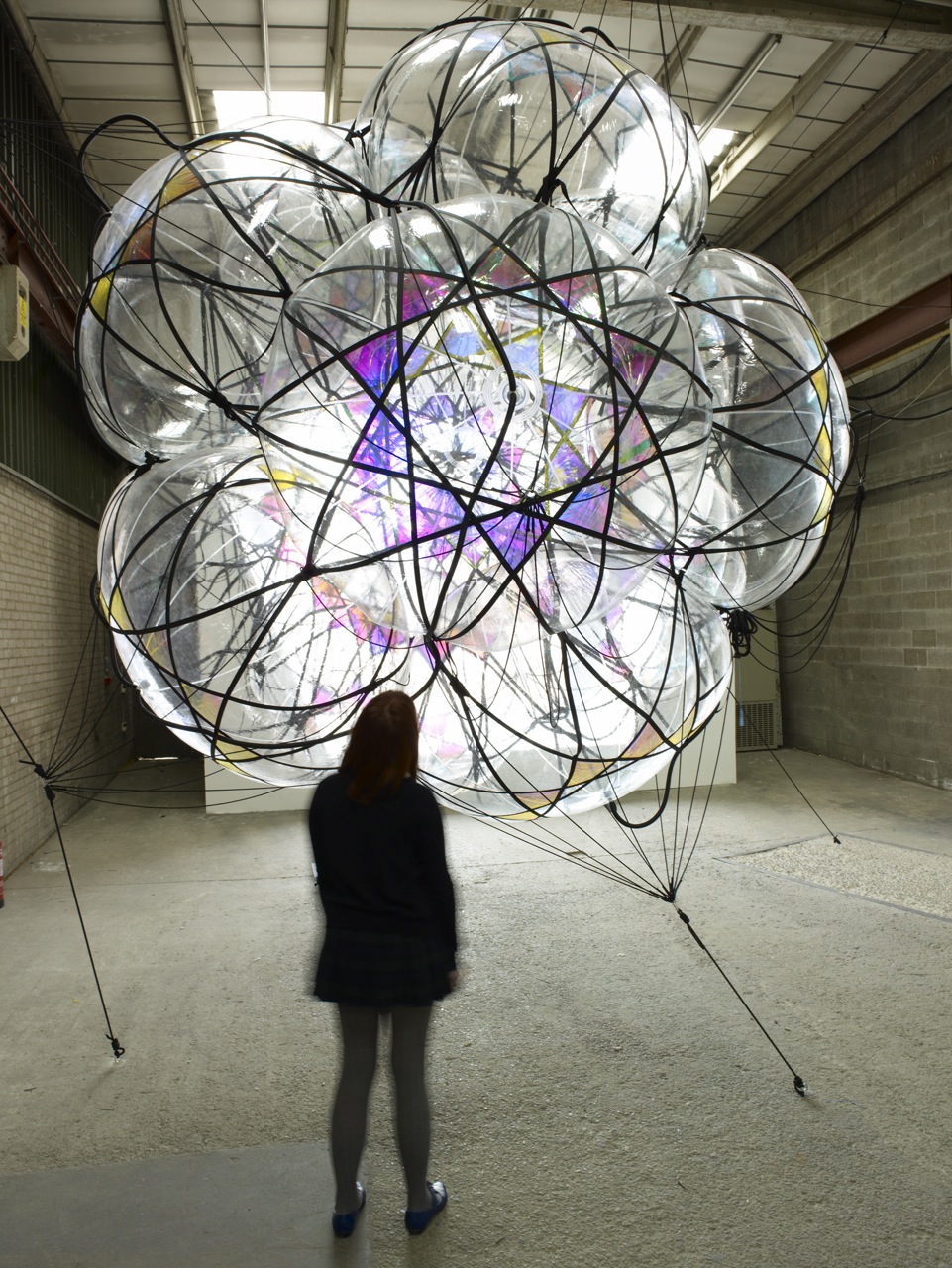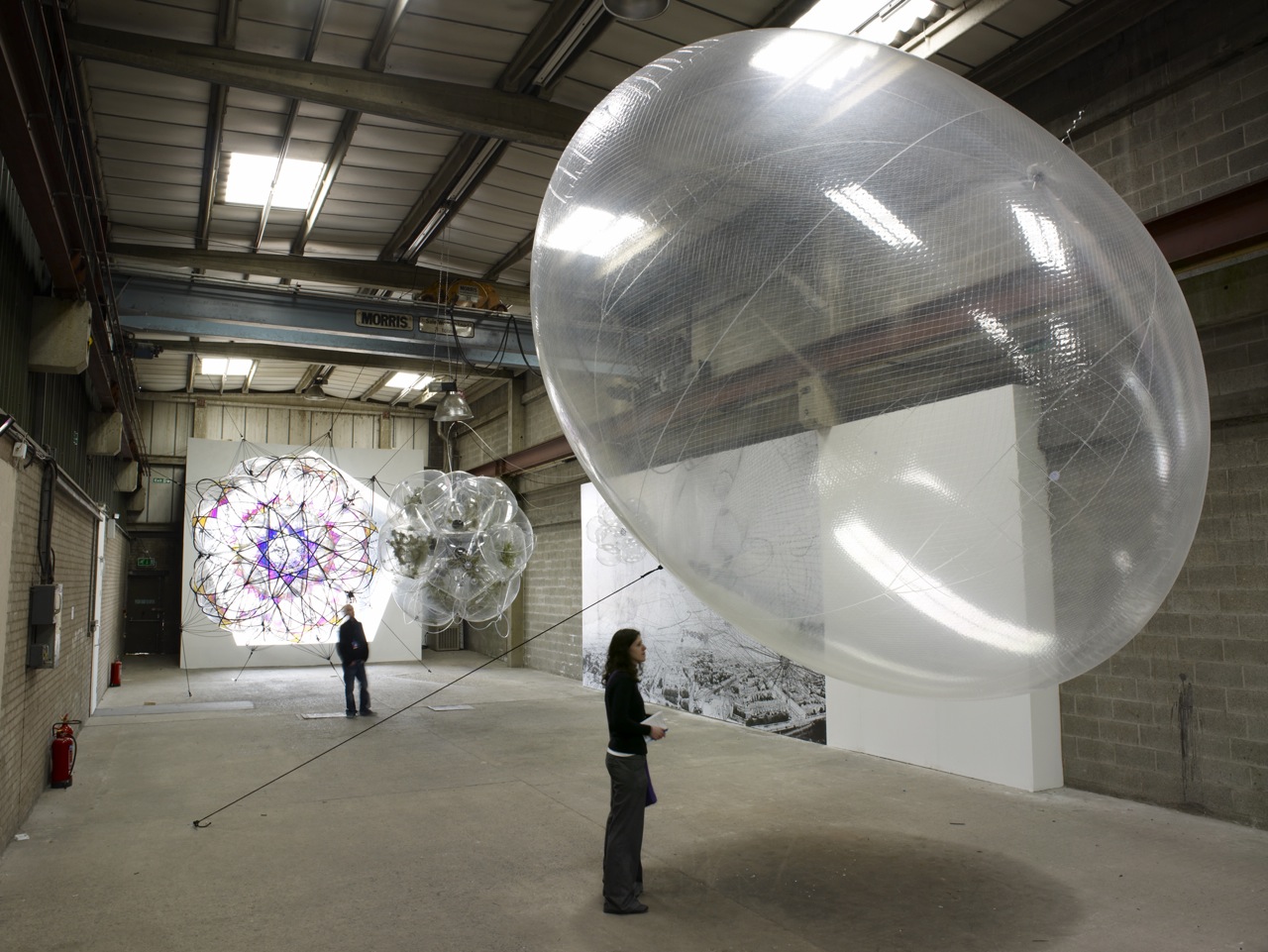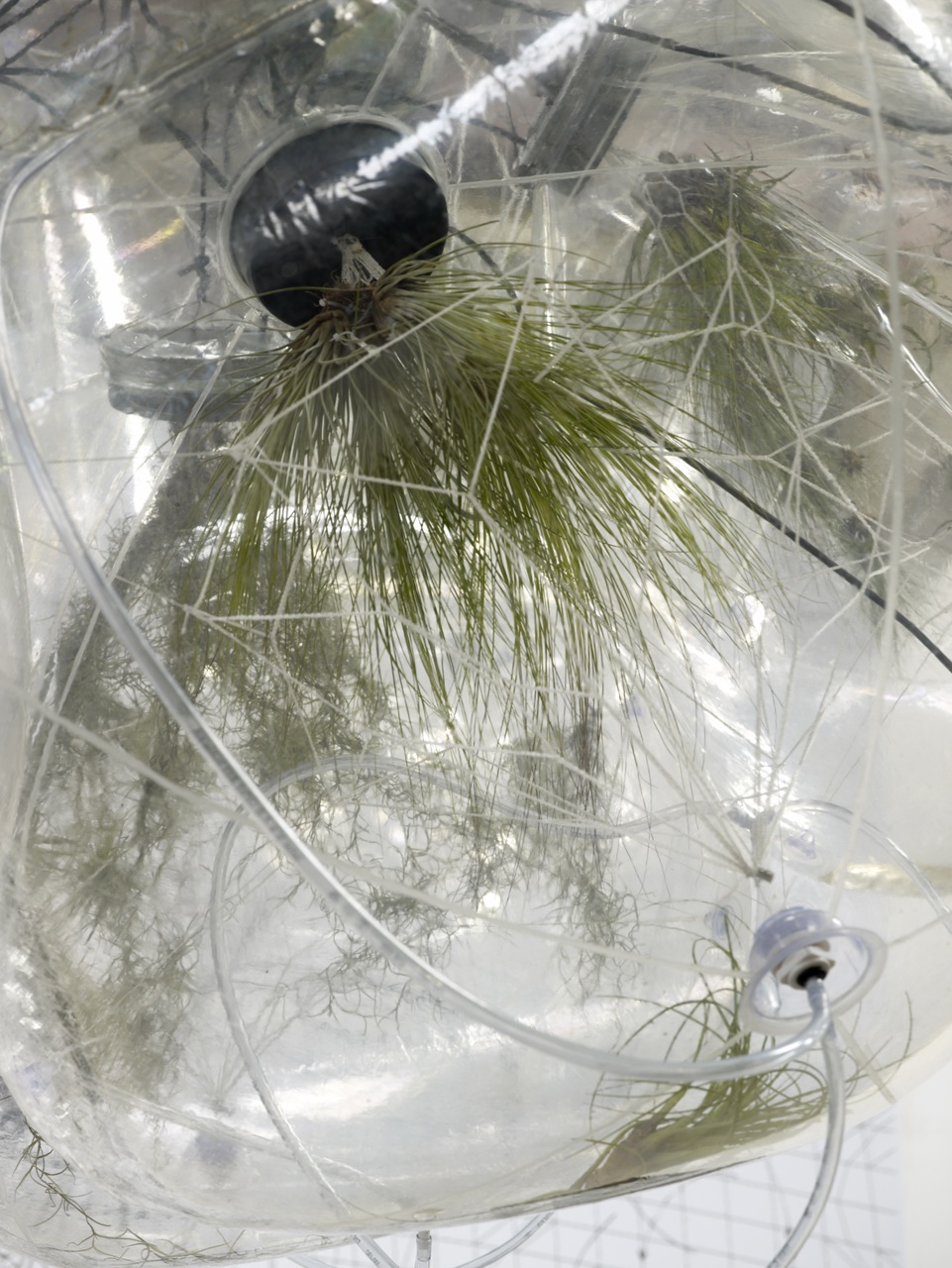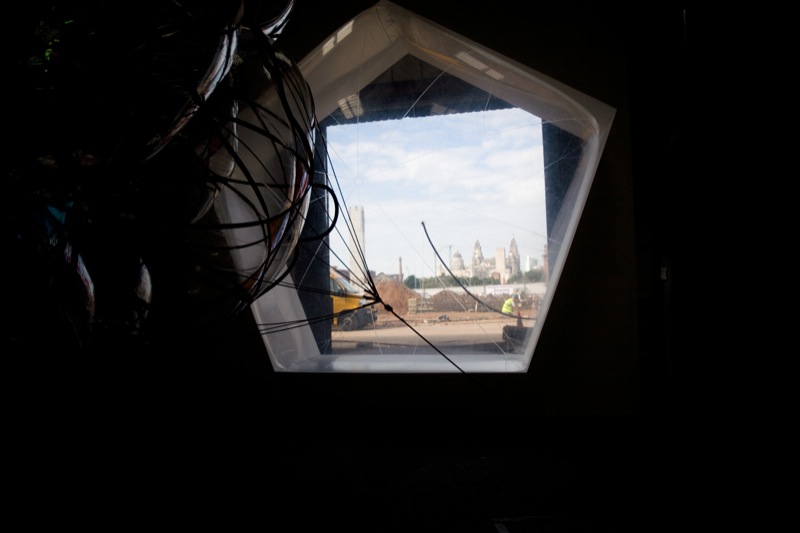His ongoing project Air-Port-City imagines a network of biospheres (or habitable cells) in the sky, like clouds, constantly moving, changing shape, and merging with one another.
2008 Biennial Year Find out more
Since 2002 trained architect Tomas Saraceno (b.1973, Argentina) has been developing his ideas for cities built in the air. This flying architecture builds on the tradition of utopian architects such as Buckminster Fuller and Archigram to propose a new mode of living that transcends national, geographic and political boundaries. Saraceno has continued, in sculptures, installations and experimental flights, to make a series of incremental steps towards his ultimate goal of cities built in the air.
His ongoing project Air-Port-City imagines a network of biospheres (or habitable cells) in the sky, like clouds, constantly moving, changing shape, and merging with one another.
His ‘biospheres’ are ethereal structures, in which clusters of transparent pillows are gathered together in arched nets to form larger spheres. Visually they invoke the structures of nature viewed through the lens of science, reminiscent of scientific models of atoms, or a collection of transparent eggs enlarged under the microscope. In his drawings, the interior of Air-Port-City appears like the palaces of the Moors (early pioneers in mathematics and astronomy), a progression of light airy halls framed by geometric forms endlessly receding into the distance.
Saraceno draws on the latest technological developments in materials and processes to realise his models. He has patented a particular application of the material Aerogel for use in the construction of lighter-than-air vehicles; while the transparent pillows used in his latest modules are made from TUP (Thermoplastic Polyurethane), a considerably lighter, more transparent and elastic material than PVC. But his work also looks to more familiar materials, natural and man-made. The plant Tillandsia, first used by Saraceno in Flying Gardens (2006), frequently appears in his work, its green tendrils growing from a cluster of transparent pillows floating in the air.
Deriving all its nutrition from air and rainwater, Tillandsia, like the inhabitants of Air-Port-City, has no need of earthbound roots. Museo Aerosolar (2007) is a giant solar balloon entirely constructed out of the common plastic bag. For this nomadic and constantly expanding project, Saraceno invites communities around the world (Italy, United Arab Emirates, Colombia, France, Switzerland, Albania, and soon the US) to donate plastic bags, which are fixed together to create a structure that remains airborne through the heat of sun alone. The project symbolically enacts Saraceno’s vision for the trans-national Air-Port-City, uniting communities in a structure that transforms the detritus of human existence into a miraculous act of flight.
Tomas Saraceno at Liverpool Biennial 2008
Air-Port-City, 2008
Sculptural installation
Commissioned by Liverpool Biennial 2008
Exhibited at Pilkingtons, Sparling Street

